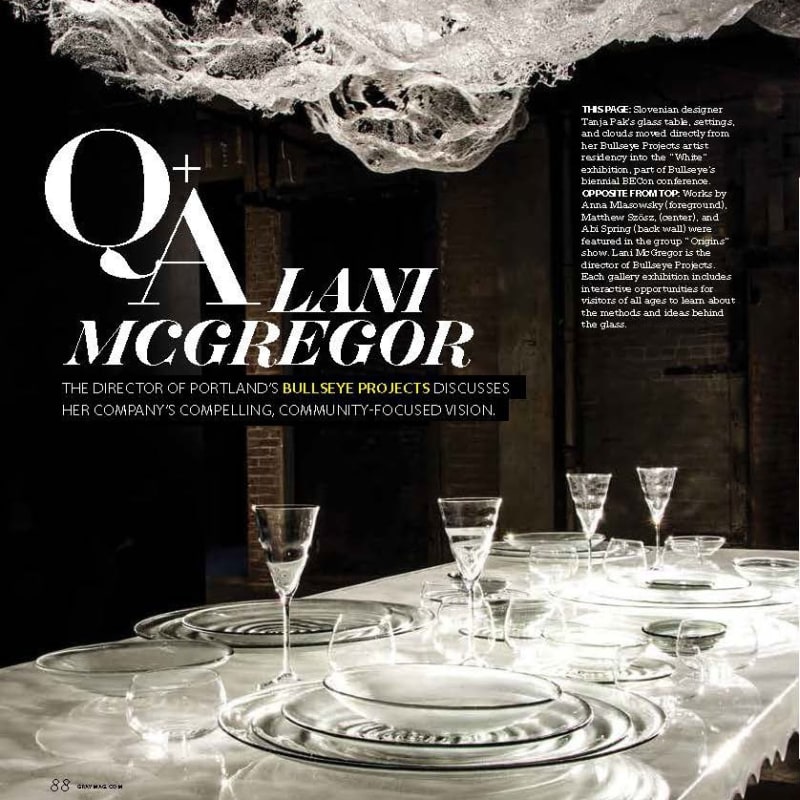View Gray MaGAzine article
As the experimental “skunkworks” wing of a factory started by artists 42 years ago, Portland’s new Bullseye Projects is on a mission to spotlight the artistic and design potential of kilnformed glass and to do it in the most accessible and inviting way possible. Through themed exhibitions in its 9,000-squarefoot Pearl District gallery, artist residencies that encourage innovation, studio commissions, and hands-on family programming, Bullseye Projects redefines the gallery experience and pushes the limits on what glass can do.
In January 2015, you re-launched the former Bullseye Gallery as Bullseye Projects. What changed besides the name?
After almost 20 years of running a gallery that did all the “traditional” things—art fairs, local and international exhibitions, museum shows—we were increasingly frustrated that so many people were intimidated by the typical gallery experience. We wanted to take the stuffiness out of engaging with art. The new Bullseye Projects achieves that with programming, hands-on classes for families, and our interactive, multimedia exhibitions, which always include ways for visitors to physically engage with the work. When we reopened, we replaced our wooden door with a cast glass door with a clear glass “lens” in the middle. It’s symbolic of our overarching mission: transparency and openness to new ideas and ways of seeing.
Bullseye Projects also oversees an artist residency program and a fabrication studio. How are these activities related?
The Portland residencies are opportunities for pure exploration. We offer four residencies a year, and they’re open to anyone—an artist wanting to look into painterly methods of glass working, say, or a ceramist looking to bring translucency to a sculptural form. We’ve even hosted group residencies with architects. Sometimes, when the opportunity arises, resident artists translate their discoveries into commissioned work for architects and designers through our fabrication studio. It’s not required, but we’re always looking for those opportunities.
Tell us more about your children’s programming.
We’ve worked with kids and kiln-glass for over 20 years, mostly in an informal way. Two years ago, we formalized the program and created a scaled-down glass lab with tiny safety glasses and low tables and stools, and we invite families in for hands-on studio sessions. Kids are naturals working with glass—they’re fearless and relentlessly open-minded. They approach glass in a way that challenges us as adults to be similarly bold.

